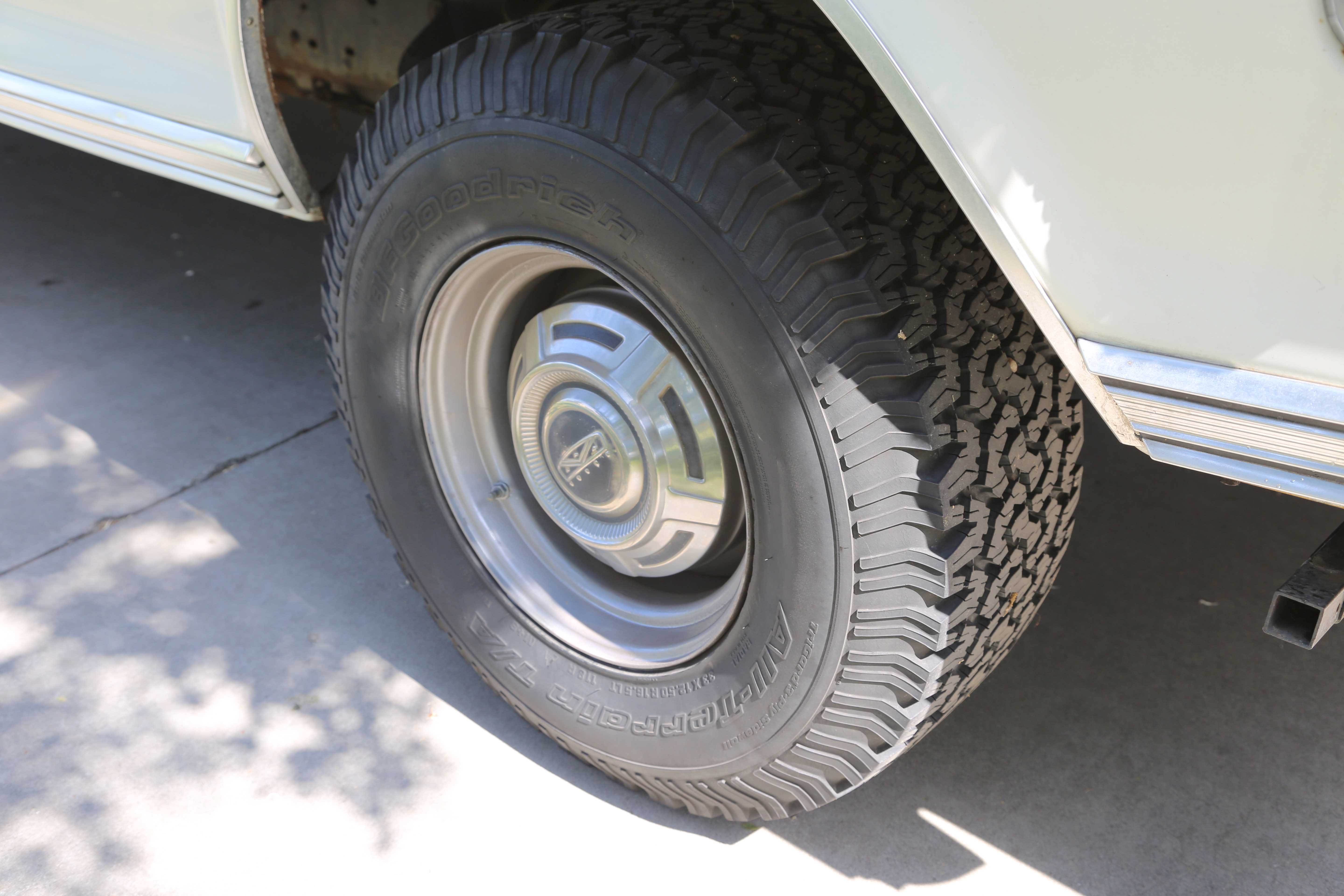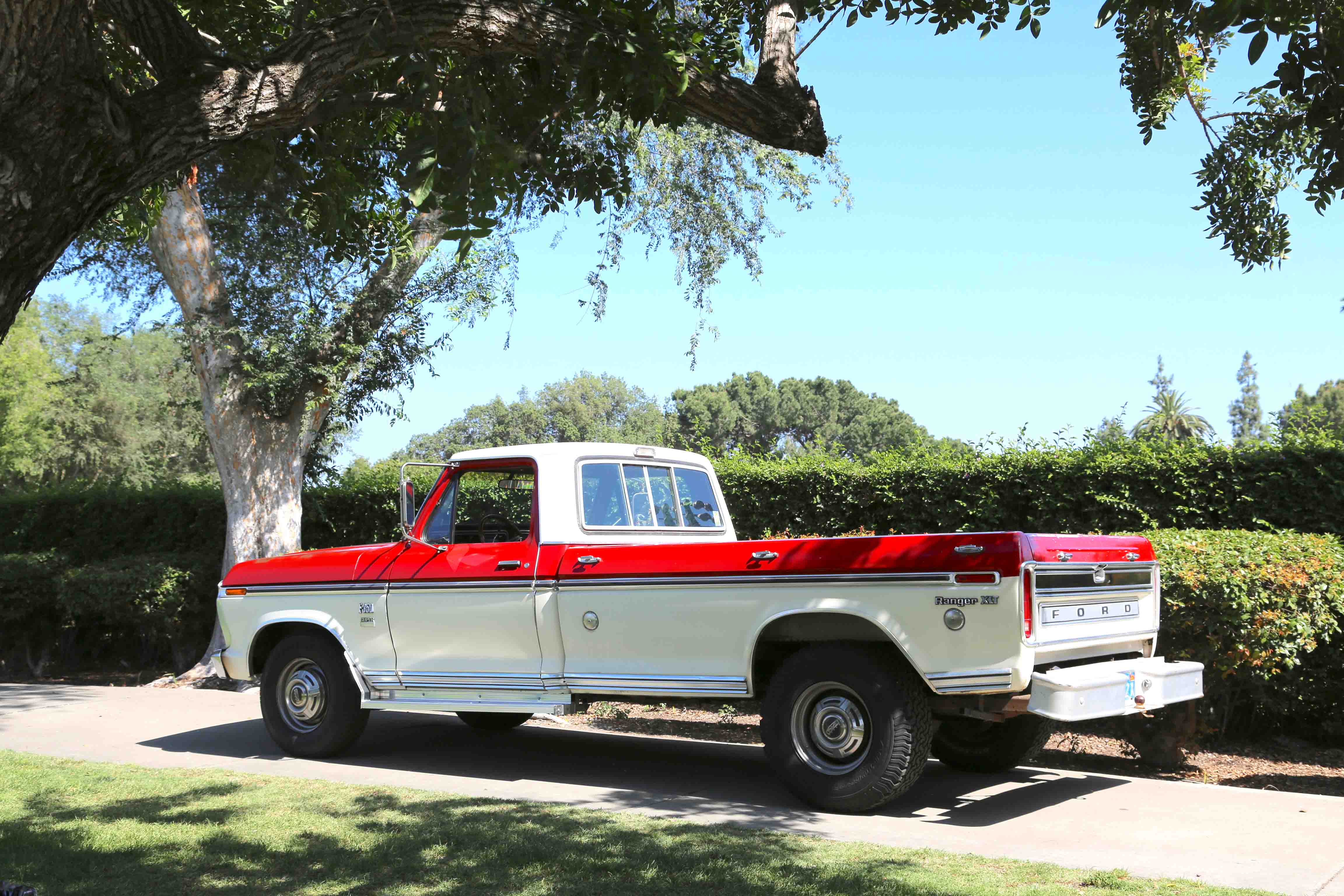Media | Articles
Ford Super Camper Specials are rare, unusual, and still cheap
Want a rare, limited-production, distinctive-so-everyone-knows-it’s-special truck that won’t bankrupt your savings? The Ford F-350 Super Camper Special is so special that “special” in the name.
Built from 1973–79, the Super Camper Special might have passed right under your nose without you knowing what they were. Ford builds gazillions of trucks that share many components—including sheetmetal—so you’re excused if these few thousand odd 1970s F-350s slipped quietly past your consciousness. But a good eye can definitely spot some major differences, like the rear wheels shoved farther back and that compartment on the passenger side of the bed. What’s that for, anyway? We’ll get there in a minute.
A camper’s delight


Made for serious campers looking for extra hauling capacity, a compliant ride, and conveniences like a built-in pigtail for easy trailer hookups and a sliding rear bumper that adjusted to aftermarket camper overhangs, the Super Camper Special was a plug-and-play camper conversion dream.
Ford started by increasing the wheelbase to an astounding 140 inches on a narrower eight-inch-tall, one-ton frame, with a single Dana 70 full-floating rear axle and twin I-beam front. Available only as a two-wheel drive single cab, the extended wheelbase made for a stable, better-riding truck with less camper intrusion, which eliminated the space normally reserved for the spare behind the rear axle. Ford fixed this with a secret compartment and detachable body panel on the passenger side of the bed for spare tire storage.
Marketplace
Buy and sell classics with confidence
Not the first to market
Ford wasn’t the first to try a special camper package; Chevy did it back in 1968 with its C30 “Longhorn.” These had standard eight-foot beds that GM spliced in an additional six-inch vertical section for a total of 8 1/2 feet of wood planked, expansive bed length, riding on a 133-inch wheelbase frame. With the tailgate down, there was 10 1/2 feet of load length. All of this extension magic smoothed out the ride, made for a more stable platform, and added cargo capacity—everything anyone could ever want in a hauling truck in the late-1960s.

Although available only as a three-quarter or one-ton, the Longhorn could be had with a host of engines, from a straight six to a 396-cubic-inch big-block. Built through 1972, a total of 22,639 Longhorns were sold—an average of about 4500 per year.
Speculation is that Ford got the special camper idea from GM’s Longhorn, winding it into the product cycle for the all-new 1973 Ford trucks. With front and rear anti-sway bars, heavy duty shocks, massive drum brakes in the rear with four-piston disc brakes up front, large radiator, dual batteries—one for the truck and the other for the camper—a special frame-mounted tie-down system for your camper, and the aforementioned built-in camper wiring, all you needed was the camper itself. Ford provided that too for an extra cost.
A flash in the pan
Ford partnered with Starcraft RV in Topeka, Indiana, to develop the unique fiberglass-shell-constructed American Road slide-in camper in 1973, as seen in some Super Camper Special advertising from that year. Ranging in price from $3500–$4800, these cleverly designed and extremely efficient campers featured spacious floor plans and holding tanks underneath, but production was halted in 1974 with only an estimated 1000 units produced.

The oil embargo of 1973 may have had a hand in the demise of the Super Camper Special, which is a shame. The campers beautifully conform to the Super’s bed, and their compound fiberglass bodies and light weight make for effortless towing, according to American road enthusiast websites.
Lots of customization
Ford offered a wide range of engines, starting with the base 360 up to the 390 FE through 1976, as well as the 460 from mid-1973–79. From 1977–79, the 351 and 400 small-blocks replaced the 360 and 390 FEs. The most common Super seems to be the 460/C-6 automatic transmission combo. In the lesser-trimmed 140-wheel-base “Trailer Specials,” the most common are those with a 460 and New Process four-speed manual transmission mounted on the floor.
Payload for the seven years of Super production was more than 5000 pounds, with an overall gross vehicle weight (GVWR) around 10,000 pounds.
Various color breakups and packages could take your basic pickup to almost Cadillac luxuriousness, something almost unheard of just a few years before. Basically everything you could get in a regular F150–F350 could be ordered for Specials. The Ranger XLT trim package was top-of-the-line from 1968–77. For the Camper Specials’ final two years, the Ranger Lariat trim package became the pinnacle of pickup perfection.


The difference between Ford’s Trailer Special and Camper Special is a matter of much debate, because for every option bundled with the Camper Special packages, one could option a Trailer Special very similarly, so the distinctions become blurred with options found on surviving examples. Generally, the more optioned 140-wheel-base F350s tend to be Camper Specials.
One in the wild
Vince Magnante of Anaheim, California, owns a 1974 Super Camper Special that his father, Joe, purchased new. He traded in a 1966 Ford Camper Special for it. Typically equipped with the 460-cu-inch C6 combo, it also has air-conditioning and a sliding rear window. Non-stock items include wood steering wheel, special seat upholstery (originally fabric), Holley 650-cfm carburetor, and electronic ignition. All of the California smog equipment was mercifully been removed.

The paint is factory original red over white. Vince’s dad used the truck for hauling supplies to his cabin in Big Bear, California, and also to drop his camper onto for outdoor camping. With just 64,000 original miles, it’s a true creampuff.
In 1974, Ford introduced its extended-cab “Super-Cab,” which necessitated eventually changing the Super Camper Special moniker to just “Camper Special” in 1976 to avoid confusion. Generally, all 1973–75 and then 1976–79 Camper Specials are identical, save for grilles and minor trim.
You may have seen one without even knowing it.
***
Ford’s production figures for the 140-inch wheelbase F350 trucks, regardless of whether they are Camper or Trailer Specials:
1973: 11,889 Styleside F350 trucks (no breakout for 140-wb trucks)
1974: 1340 units
1975: 2816 units
1976: 2589 units
1977: 3058 units
1978: 3058 units
1979: 3719 units












Ford Camper Special editions were around before Chevy thought about it. I have a 64 F250 with 66400 original miles. It runs and drives like new with minor rust. It is also a Special Cab which means leather seat, dash pad, and 30lbs of sound deadening.
I have a 1978 F350 camper special with the 460 Portland on May 18. It is the collector?. I also have a 1970 holiday camper on top of it. That is also a collectors so I’m able to haul it as most collectors don’t allow you to haul, but this is a camper special, I would be interested in talking to some other owners for tips And advice or just stories mine is a true time capsule with only 35,000 original miles